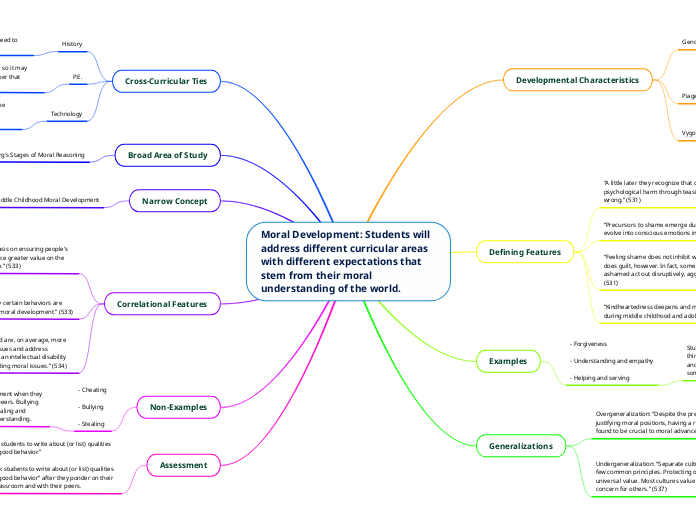by Christin Clark 3 years ago
262
Moral Development: Students will address different curricular areas with different expectations that stem from their moral understanding of the world.

by Christin Clark 3 years ago
262

More like this
Students may be taught moral considerations when interacting with their peers and including others in activities and discussions.
Some moral concepts may be difficult for students to understand. Kholberg’s earlier stages of moral development may be easier for students to grasp.
Children’s gender may affect their moral reasoning for both physical and social reasons. Teachers can both foster and challenge this reasoning by posing diverse moral questions that will get each gender to think about issues they don’t generally think about as much as the other gender.